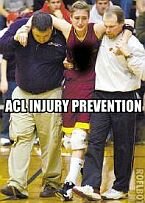Automobile Accidents:
TMJ (Temporomandibular Joint) Pain
The TMJ or temporomandibular joint is your jaw joint and is made up of two bones (mandible or lower jaw and temporal bone, bone above your jaw) and a disk like in-between your spinal bones. Place your fingers just in front of your earlobes and open and close your mouth. You will feel the lower jaw move (the upper jaw is stationary).
The TMJ works hard as the average person opens and closes the TMJ about 2000 times per day. There are five muscles that move the jaw and are called your masticatory muscles. Mastication means to chew. Problems can arise when these masticatory muscles go into spasm as the spasm will cause direct pressure on the disc in the TMJ.
Trauma to the TMJ from a rear-end collision is caused when the head and neck bend backwards (extension) faster than the mandible does. This results in a hyperextension of the TMJ causing compression of the disk and damage to the muscles and joint attachments. Many auto accident victims report a loud click or popping sensation at impact.
The studies below report on the damage done to the TMJ by motor vehicle collisions.
Delayed temporomandibular joint pain and dysfunction induced by whiplash trauma: a controlled prospective study.
Our results suggest that one in three people who are exposed to whiplash trauma is at risk of developing delayed TMJ symptoms that may require clinical management.
Orofacial injuries due to trauma following motor vehicle collisions: part 2. Temporomandibular disorders.
Temporomandibular disorders (TMDs) following motor vehicle collisions (MVCs) may result from direct orofacial trauma but also occur in patients with whiplash-associated disorder (WAD) without such trauma. TMDs may not be identified at the time of first assessment, but may develop weeks or more after the MVC. TMDs in WAD appear to occur predominantly in females and can be associated with regional or widespread pain.
Impaired jaw function and eating difficulties in whiplash-associated disorders.
Altogether, these observations suggest an association between neck injury and disturbed jaw function and therefore impaired eating behaviour. A clinical implication is that examination of jaw function should be recommended as part of the assessment and rehabilitation of WAD patients.
The damage to the TMJ can be "intracapsular" meaning damage to the disk and joint capsule and/or "extracapsular" or damage to the surrounding muscles, tendons, and ligaments. Both problems can result in trigger points or muscle spasms of not only the masticatory muscles, but the neck, shoulder, and upper back muscles as well. Dull, aching pain is most common and joint motion may or may not be restricted.
The best treatment for TMJ problems uses a multi-disciplinary approach: a dentist and chiropractor who both understand the proper examination and treatment of this problem. At Capital Sports Injury Center in Silver Spring and Bethesda, chiropractor Dr. Steven Horwitz has over 25 years experience treating TMJ injuries sustained in motor vehicle collisions. Techniques like Active Release Techniques, Graston Technique, Cold Laser, Corrective Exercise, and ultrasound are extremely effective at treating TMJ injuries by alleviating the trigger points and spasm of the involved muscles.
At Capital Sports Injury Center in Silver Spring and Bethesda, chiropractor Dr. Steven Horwitz has over 25 years experience treating injuries sustained in motor vehicle collisions. Techniques like Active Release Techniques, Graston Technique, Cold Laser, Corrective Exercise, and ultrasound are extremely effective at treating TMJ injuries by alleviating the trigger points and spasm of the involved muscles.
|
The Ultimate Nutritional Lie Detector Test LEARN MORE 
|
Kettlebell Rehab

Click Here
To See How Kettlebells will transform your body!
Vortex Rehab

Click Here
To See How This
Revolutionary Machine
Can Help You!
Partner / Support

Loans up to 3 months - fast cash advances for up to 90 days and up to $5,000!


















